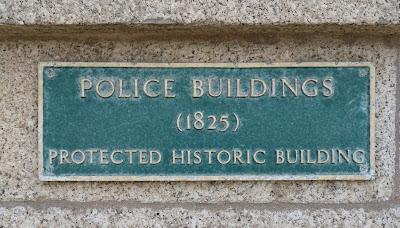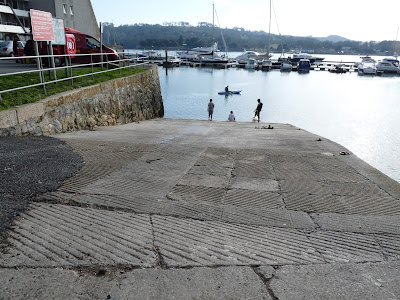I’ve been reflecting on what happened on Sunday. Why didn’t I do well under jib and mizzen? What was I doing wrong?
I was so perplexed that I asked John Welsford’s forum members who immediately contributed greatly to my reflections.
A number of different possibilities seem to have emerged.
Did I divert my attention in the middle of the tack to tend to the mizzen and so divert my attention away from making the move crisply? So did I make the turn too slowly? There seems to be a consensus building that this may have been one of the issues. I was certainly struggling to get her to turn at all. At one point I even checked to see that the rudder blade hadn’t sprung upwards out of the water (it hadn’t).
Some pointed out that leaving the jib until it fills from the ‘wrong side’ and then gently releasing whilst sheeting in on the other side should have pulled Arwen through the turn.
I did ease the mizzen and it would seem that many view this as being the correct thing to do just before turning into the tack. If it had been tightly sheeted then it would just have held Arwen head to wind.
I think I may well have had some lee helm on reflection, so Arwen didn’t want to turn into the wind when I was beating towards it. I needed to get a good speed in the water, which I was doing. I did bear away to get speed further but then I ended up being on a beam reach and starting a tack from a beam reach clearly doesn’t work because the sail just depowered as I started to turn.
Maybe I should have released the jib sheet completely when I started the turn (I think I did) and I should have turned the boat smartly through the wind. I think that I threw the tiller over significantly and this may have contributed to a loss in speed and almost a stalling effect. I needed to time the turn so that the hulk pivoted sharply on the top of a wave. I did also try backing the jib but this didn’t seem to work either.
Definitely part of the problem was that the narrow estuary meant you didn’t have much ‘wiggle room’ to complete these manoeuvres before a set of rocks were in front of you. I know that I needed to tighten the jib sheet immediately she’d gone through head to wind but I never got the opportunity to do so!
Was I underpowered – didn’t feel like it; felt like I was riding an out of control roller coaster! The centreboard was well down which I assume is the correct position for a tack. I tried various shades of tightening/de-tensioning on the mizzen sheet to no avail.
Gybing was definitely something I didn’t think of at the time and should have done – it would have been a better and safer option – lesson learned!
Richard Schmidt is an experienced navigator sailor and he had this to say
“Pull the mizzen in tight and push the tiller over to turn the boat into wind. Backwind the jib to pull the bow around to the new tack and once you are though the eye of the wind release the mizzen to allow the bow to fall away on the other tack. Then you can swop the jib onto the new jack, bear away to get some speed and start pulling in the mizzen and jib. And you are done. If you get stuck you can gybe instead of tacking. Sounds crazy but if you release the mizzen as you bear away it is pretty easy to do. Just concentrate on trimming the sails to match the wind direction. The actual gybe is pretty mild as the mizzen is so small”
There is a lot to reflect on here and the need to make another set of crib sheet notes. There is more to practice in more moderate conditions as Jon suggests on the forum. As always, my thanks to forum members, Jon, Anders, Richard, Thomas and Robin.
Yet again, John W’s forum has come to the rescue with timely advice. I cannot stress enough that if you are building or thinking of building one of John’s designs (trust me you should, you won’t be disappointed), then you have to join his yahoo forum. The guys are outstanding in their knowledge, advice and support of each other.
Steve
I was so perplexed that I asked John Welsford’s forum members who immediately contributed greatly to my reflections.
A number of different possibilities seem to have emerged.
Did I divert my attention in the middle of the tack to tend to the mizzen and so divert my attention away from making the move crisply? So did I make the turn too slowly? There seems to be a consensus building that this may have been one of the issues. I was certainly struggling to get her to turn at all. At one point I even checked to see that the rudder blade hadn’t sprung upwards out of the water (it hadn’t).
Some pointed out that leaving the jib until it fills from the ‘wrong side’ and then gently releasing whilst sheeting in on the other side should have pulled Arwen through the turn.
I did ease the mizzen and it would seem that many view this as being the correct thing to do just before turning into the tack. If it had been tightly sheeted then it would just have held Arwen head to wind.
I think I may well have had some lee helm on reflection, so Arwen didn’t want to turn into the wind when I was beating towards it. I needed to get a good speed in the water, which I was doing. I did bear away to get speed further but then I ended up being on a beam reach and starting a tack from a beam reach clearly doesn’t work because the sail just depowered as I started to turn.
Maybe I should have released the jib sheet completely when I started the turn (I think I did) and I should have turned the boat smartly through the wind. I think that I threw the tiller over significantly and this may have contributed to a loss in speed and almost a stalling effect. I needed to time the turn so that the hulk pivoted sharply on the top of a wave. I did also try backing the jib but this didn’t seem to work either.
Definitely part of the problem was that the narrow estuary meant you didn’t have much ‘wiggle room’ to complete these manoeuvres before a set of rocks were in front of you. I know that I needed to tighten the jib sheet immediately she’d gone through head to wind but I never got the opportunity to do so!
Was I underpowered – didn’t feel like it; felt like I was riding an out of control roller coaster! The centreboard was well down which I assume is the correct position for a tack. I tried various shades of tightening/de-tensioning on the mizzen sheet to no avail.
Gybing was definitely something I didn’t think of at the time and should have done – it would have been a better and safer option – lesson learned!
Richard Schmidt is an experienced navigator sailor and he had this to say
“Pull the mizzen in tight and push the tiller over to turn the boat into wind. Backwind the jib to pull the bow around to the new tack and once you are though the eye of the wind release the mizzen to allow the bow to fall away on the other tack. Then you can swop the jib onto the new jack, bear away to get some speed and start pulling in the mizzen and jib. And you are done. If you get stuck you can gybe instead of tacking. Sounds crazy but if you release the mizzen as you bear away it is pretty easy to do. Just concentrate on trimming the sails to match the wind direction. The actual gybe is pretty mild as the mizzen is so small”
There is a lot to reflect on here and the need to make another set of crib sheet notes. There is more to practice in more moderate conditions as Jon suggests on the forum. As always, my thanks to forum members, Jon, Anders, Richard, Thomas and Robin.
Yet again, John W’s forum has come to the rescue with timely advice. I cannot stress enough that if you are building or thinking of building one of John’s designs (trust me you should, you won’t be disappointed), then you have to join his yahoo forum. The guys are outstanding in their knowledge, advice and support of each other.
Steve






































































